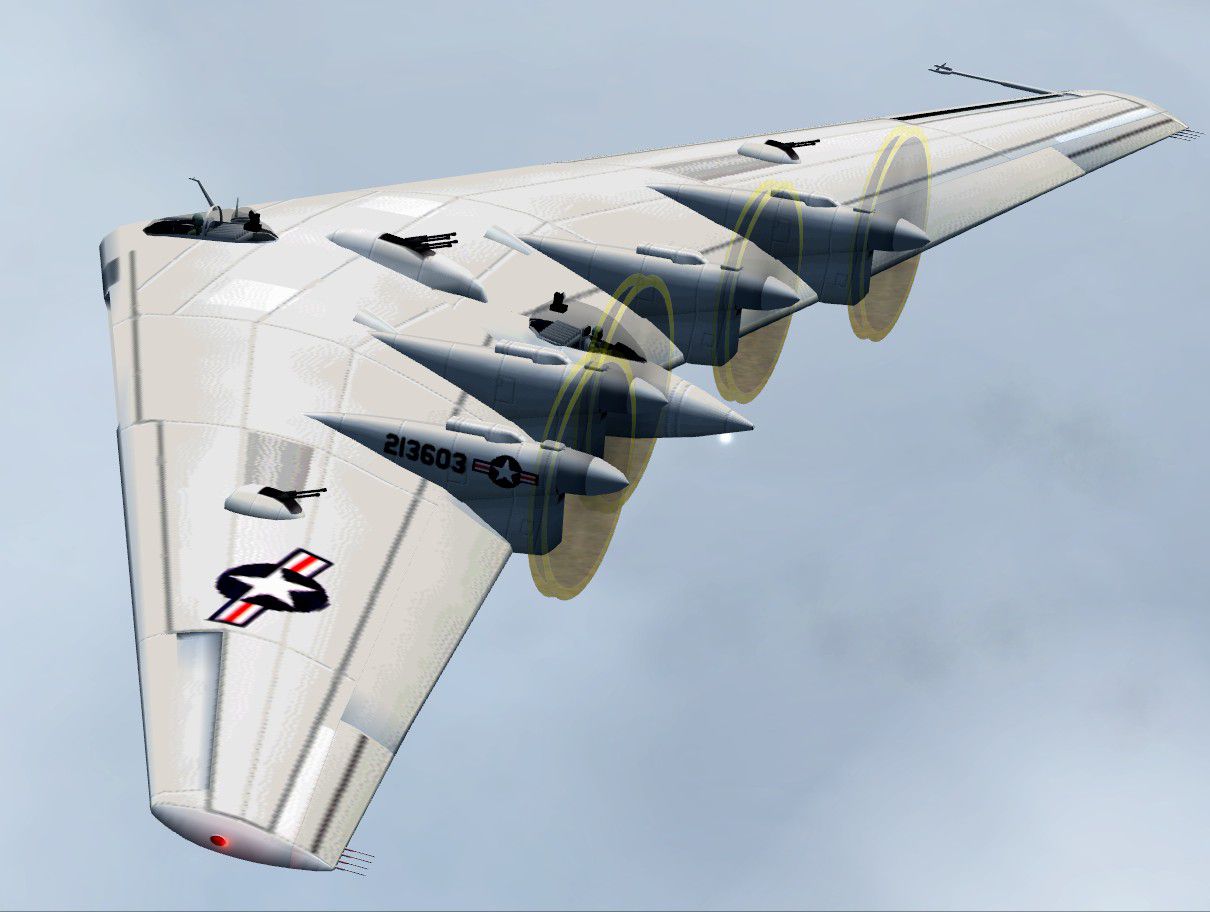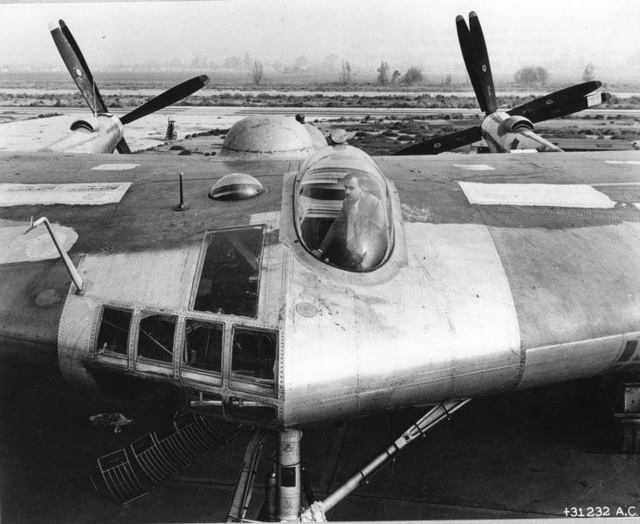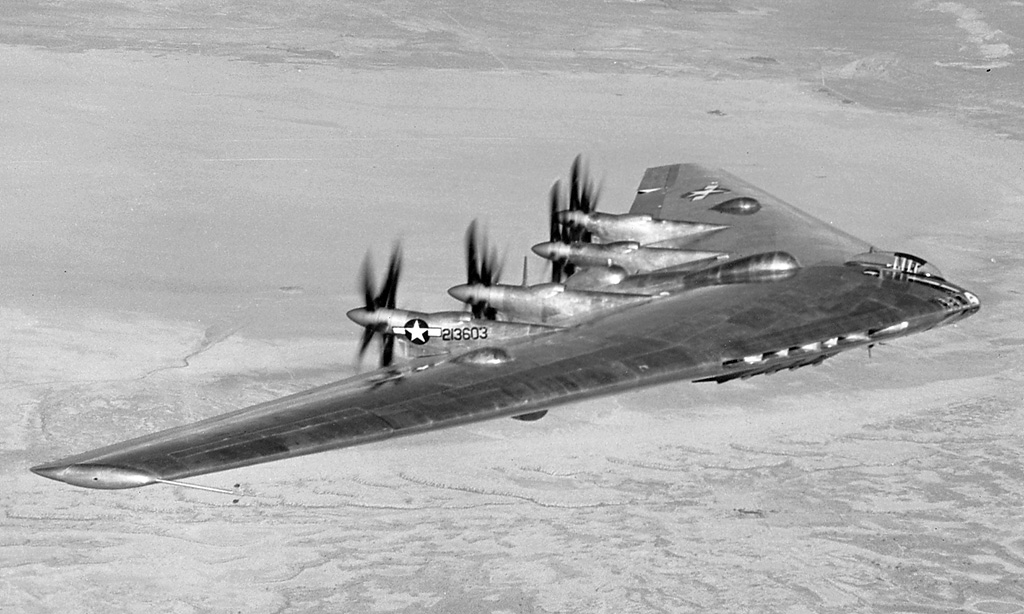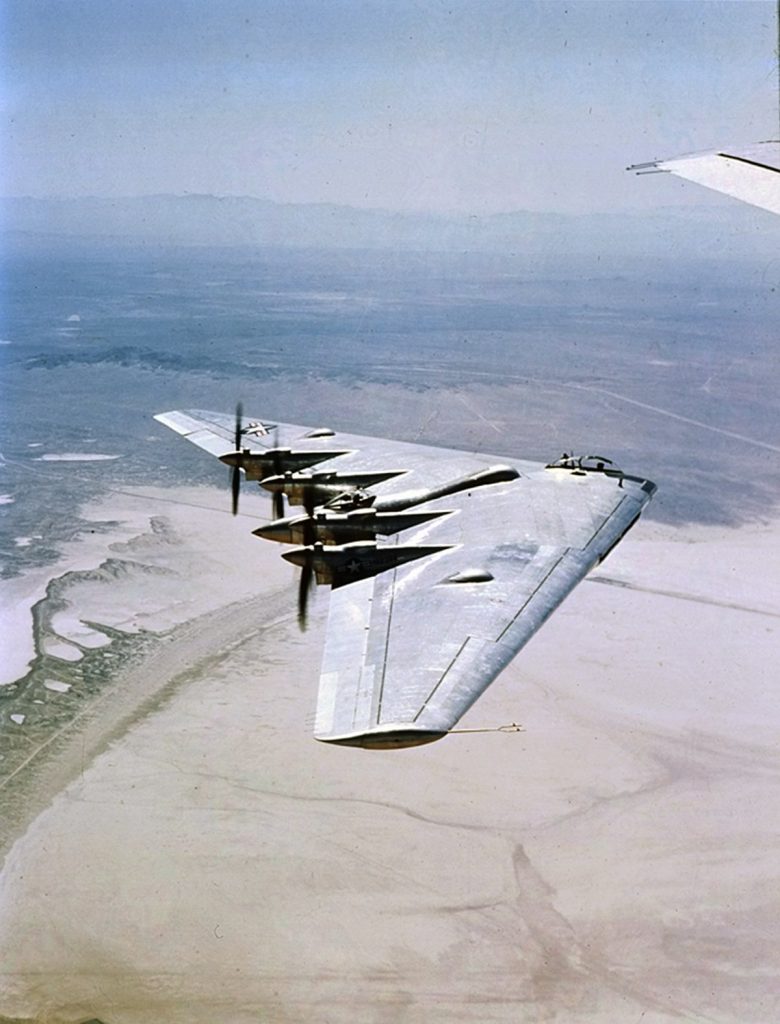Northrop XB-35: The Revolutionary Flying Wing Bomber of World War II
The Northrop XB-35 was an experimental heavy bomber aircraft developed by the Northrop Corporation during World War II. It was an innovative design that featured a flying wing configuration, which means it lacked a distinct fuselage and had the wings seamlessly integrated into the main body of the aircraft. Here are some key details about the Northrop XB-35:
Purpose and Development: The XB-35 was designed to meet the United States Army Air Forces’ (USAAF) requirement for a long-range, strategic heavy bomber capable of carrying heavy payloads. Northrop Corporation began development of the XB-35 in the early 1940s, in response to the demand for a more advanced and efficient bomber aircraft.
Flying Wing Design: One of the most distinctive features of the XB-35 was its flying wing design. Instead of having a traditional fuselage with separate wings, the aircraft’s wingspan extended across its entire body, giving it a unique and futuristic appearance. This design offered several advantages, including increased fuel efficiency and reduced drag.
Size and Specifications: The XB-35 had an impressive wingspan of 172 feet (52 meters) and a length of 53 feet (16 meters). It was powered by four Pratt & Whitney R-4360 Wasp Major radial engines, each generating 3,000 horsepower. The aircraft had a maximum speed of around 365 miles per hour (587 kilometers per hour) and a range of approximately 7,000 miles (11,265 kilometers).
Experimental Features: The XB-35 incorporated several experimental features. It had a pressurized crew compartment to provide a more comfortable and safe environment for the crew during long-range missions. The aircraft also featured a remote-controlled gun turret system for defense.
Challenges and Cancellation: The development of the XB-35 faced numerous technical challenges and delays, including issues with the aircraft’s stability and control. Additionally, the advent of jet-powered bombers like the Boeing B-47 Stratojet rendered the XB-35’s piston-engine design less favorable. As a result, the USAAF canceled the XB-35 program in 1949, and only two prototypes were built.
Legacy and Influence: Although the XB-35 program was not successful in terms of production, it played a crucial role in advancing aviation technology. The flying wing concept explored in the XB-35 laid the groundwork for future aircraft, including the Northrop YB-49 and the famous Northrop B-2 Spirit stealth bomber.
The Northrop XB-35 remains an iconic aircraft in aviation history, known for its unconventional flying wing design and its contribution to the development of advanced bomber aircraft. Despite its limited production and eventual cancellation, its innovative features and influence on subsequent designs have left a lasting impact on the field of aviation.
Hits: 2











